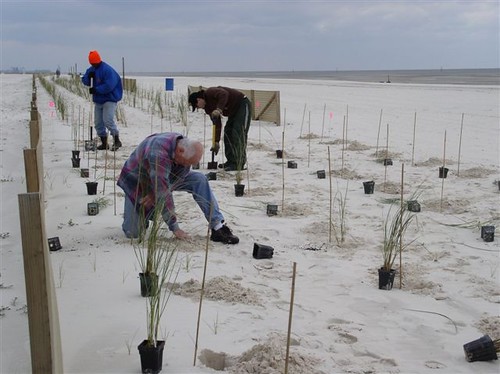
For Kiln, Miss. resident David Koch, there’s a lot of truth to the expression “everything runs downstream.” Koch’s land borders Rotten Bayou, and he has made great strides to ensure no pollutants wash off his land and into the bayou, which feeds the Gulf of Mexico.
Environmental stewardship is important, the tree farmer says. Koch has worked with USDA’s Natural Resources Conservation Service (NRCS) to make his land friendlier to the environment, and he encourages other landowners to do the same.
That’s why he allowed NRCS to announce its newest initiative, the Gulf of Mexico Initiative (GoMI), on his property last week. The initiative targets 16 watersheds across the U.S., including the Jourdan River watershed. Two bayous—Rotten Bayou and Bayou La-Terre—that flow into the Jourdan were selected for this initiative. NRCS is dedicating up to $50 million over three years to this effort in the five Gulf Coast states.
This initiative will help producers avoid, control and trap the runoff of nutrients and create habitat for threatened and endangered species. It also will help producers make their agricultural lands more ecologically friendly through the use of practices that are better for production and the environment.

Koch’s farm is a model for conservation. He retired hundreds of acres of soybeans and other row crops to plant native longleaf pine trees. Trees help prevent erosions, important because of the land’s proximity to the bayou—soil that washes off farmland can contain fertilizers and other chemicals that can harm water quality.
Koch is enthusiastic about the impacts GoMI will have on the Jourdan River as well as the Gulf. GoMI is bringing together the NRCS with several partners, such as the Mississippi Department of Environmental Quality and U.S. Geological Survey, to not only use best management practices to improve water quality but monitor improvements, too.
Launching this initiative is a top priority for USDA because the Gulf of Mexico is one of our nation’s premier natural resources. It provides vital habitat for wildlife and creates jobs in industries that depend upon them.
GoMI serves as a perfect example of how government, private citizens, communities and other organizations can work together.
“The cost is the biggest concern of most people, but if the government pays some of it, a lot of people will consider improvements,” Koch says.
Read more about the Gulf of Mexico Initiative.
Check out more conservation stories on the USDA blog.
Follow NRCS on Twitter.
